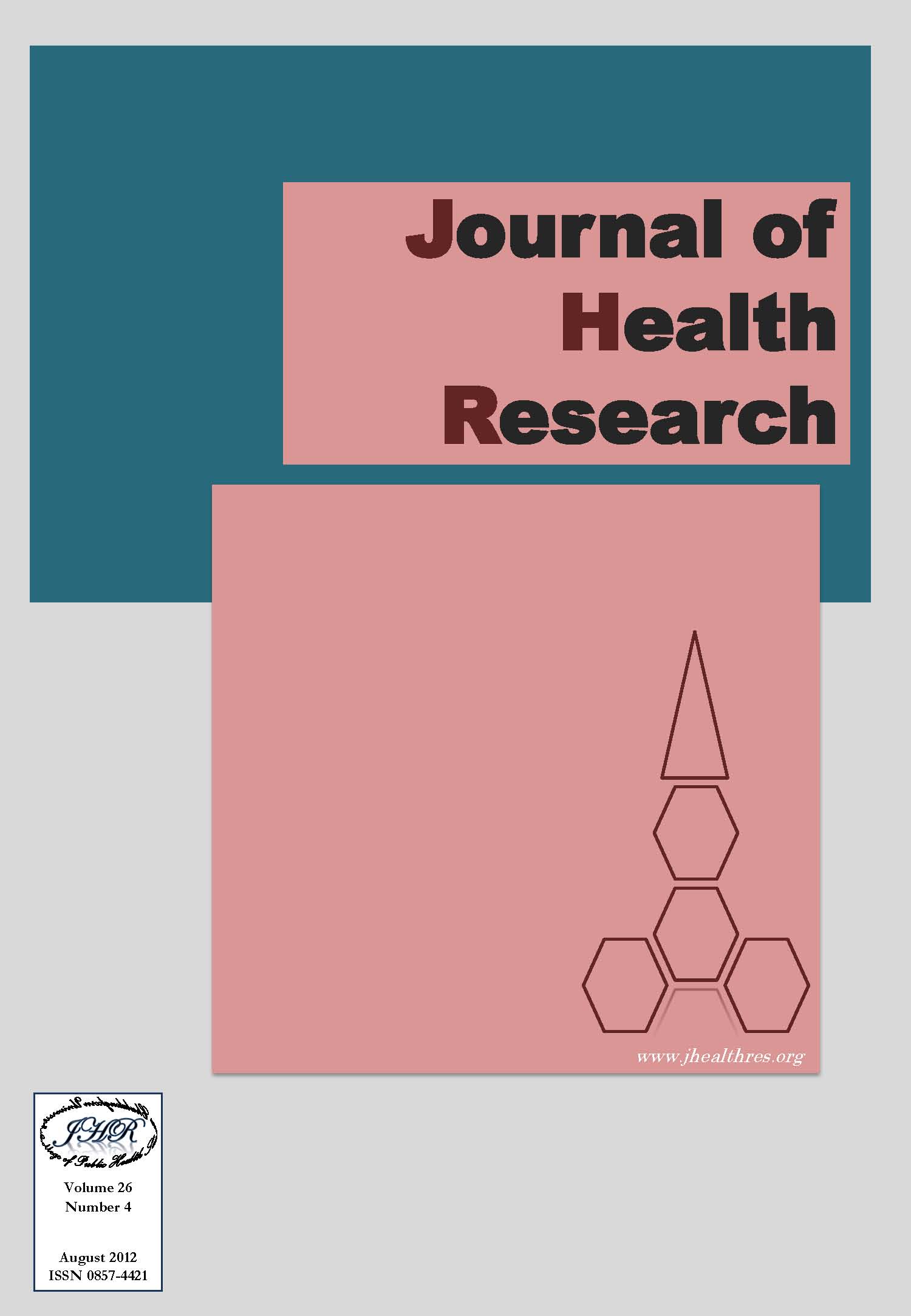Determining of Complementary Food Practice and Stunted Thai Children Aged 24 Months
Keywords:
childhood stunting, child growth, infant growth, complementary foodAbstract
This descriptive study was conducted to determine the prevalence of child stunting at 24 months by using the Thai and New WHO growth standard and to examine the association between time of introduction of complementary food and child stunting at 24 months. The data of 4,245 children aged 24 months were selected from a cohort study of Thai children. After excluding 60 twin infants and 18 with abnormalities, 4,167 children remained for data analysis. Chi-square tests and multiple logistic regression were undertaken to identify variables that influenced child stunting at 24 months. For the 2001 Thai reference, the study showed 13.95% stunting prevalence whereas 2006 WHO reference showed 16.48%. After adjusting for confounding factors, the study showed that prolonged breast feeding was significantly associated with child stunting from both the WHO (OR=2.70, 95% CI=1.77-4.10) and Thai references (OR=2.31, 95% CI=1.48-3.60). By using WHO reference, this study found that children who were introduced pork before four months (OR=4.72, 95% CI=1.11-20.19) had the highest risk to be stunting at 24 months. And, by using Thai reference, it was found that children who were introduced whole eggs before four months (OR=2.76, 95% CI=0.56-3.54) had the highest risk to be stunting at 24 months. In conclusion, this study found that early introduction of complementary foods is a risk of child stunting. Implementing various health education programs to mothers and caretakers focusing on the improvement of feeding practices and by timely introduction of complementary food, optimum growth in children can be achieved.







